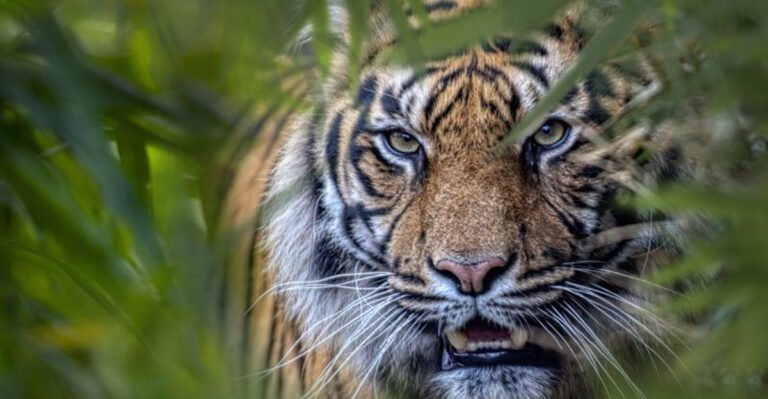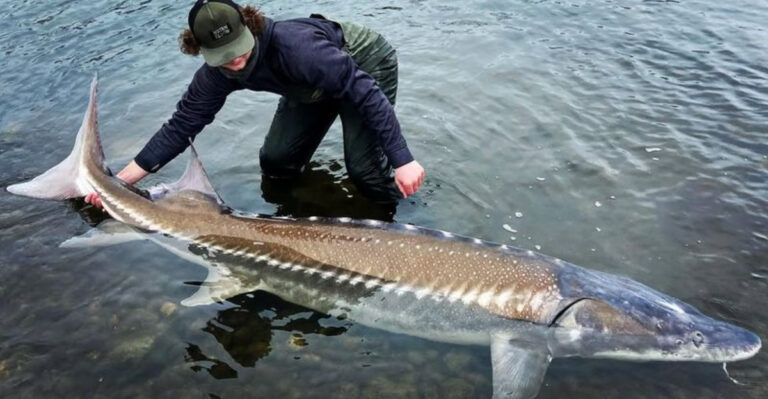Endangered Sharks: 12 Species Facing Extinction
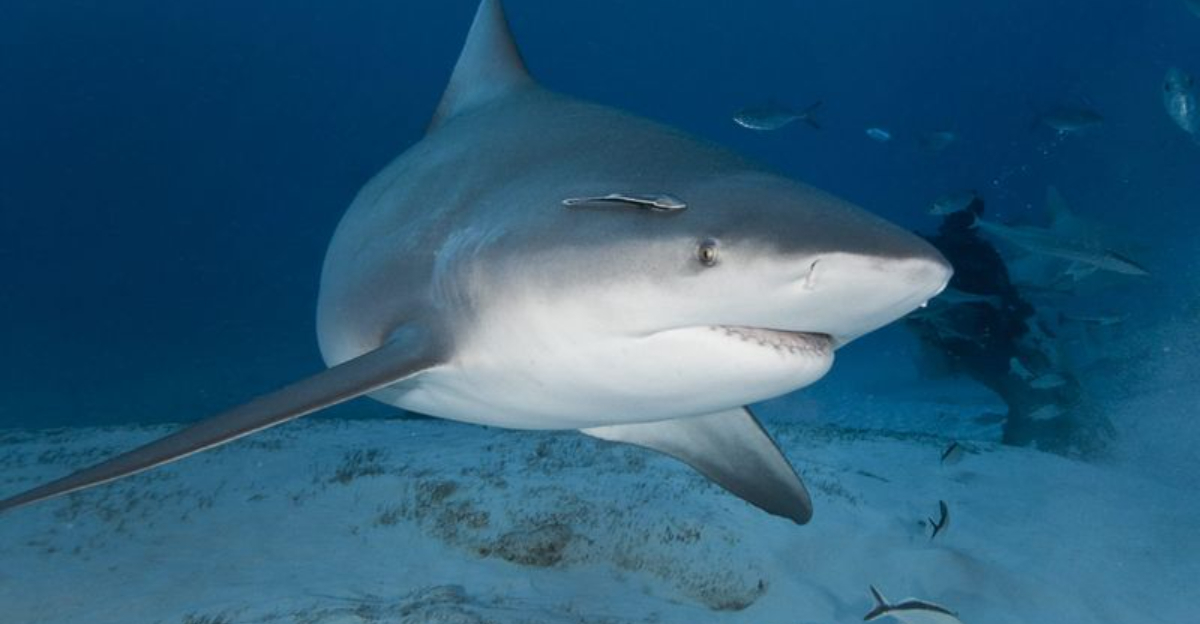
Sharks have ruled our oceans for over 450 million years, yet today many species face unprecedented threats. From industrial fishing to habitat destruction, these ancient predators are disappearing at alarming rates.
Let’s explore twelve shark species currently swimming on the edge of extinction, and why their survival matters for healthy ocean ecosystems.
1. Great White Shark
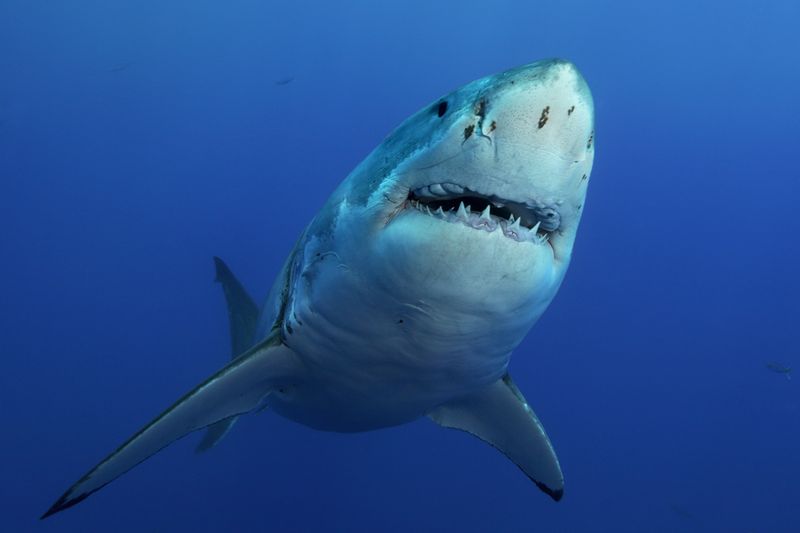
Once the undisputed king of the seas, great whites now struggle against relentless hunting and accidental capture in fishing gear. Despite their fearsome reputation, these sharks reproduce slowly, making population recovery difficult.
Coastal development further squeezes their hunting grounds, forcing dangerous human-shark interactions that typically end badly for the sharks.
2. Scalloped Hammerhead Shark

Recognizable by their uniquely shaped heads, scalloped hammerheads have declined by over 80% in some regions. Fishermen target these sharks specifically for their large, valuable fins used in shark fin soup.
Their habit of swimming in large schools makes them particularly vulnerable to mass capture in fishing nets.
3. Oceanic Whitetip Shark
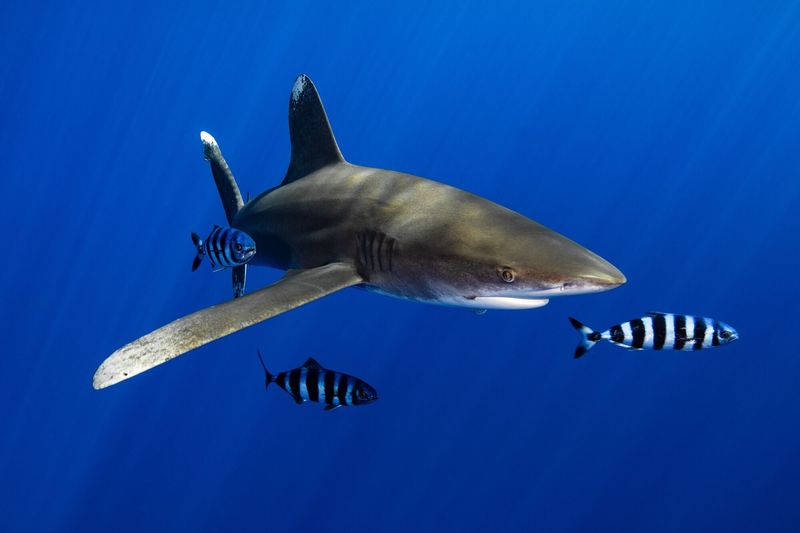
Jacques Cousteau once called these sharks “the most dangerous of all sharks,” yet today they’re fighting for survival. Their characteristic white-tipped fins fetch premium prices in Asian markets.
Found in warm, open waters worldwide, these slow-breeding predators have virtually disappeared from regions where they once dominated.
4. Basking Shark
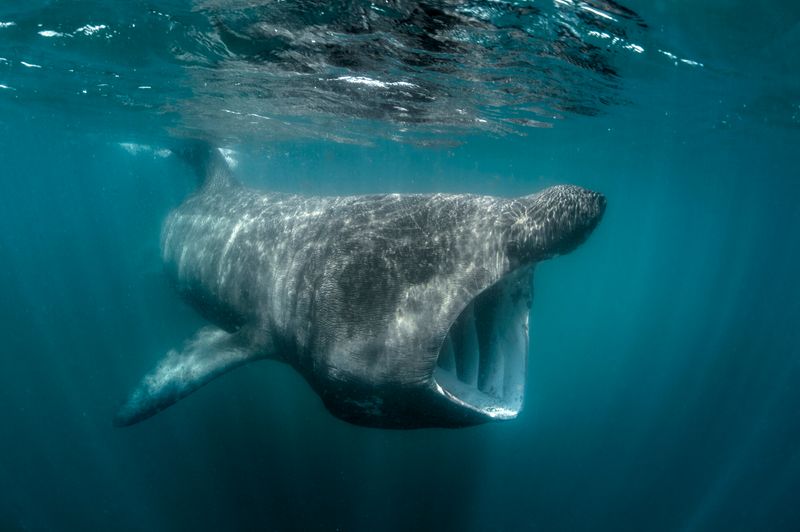
Gentle giants of the sea, basking sharks cruise near the surface with mouths agape, filtering tiny plankton. Despite reaching lengths of 40 feet, these harmless behemoths face serious threats.
Climate change disrupts their food supply while fishing nets entangle them. Their slow growth and late maturity make recovery challenging.
5. Thresher Shark
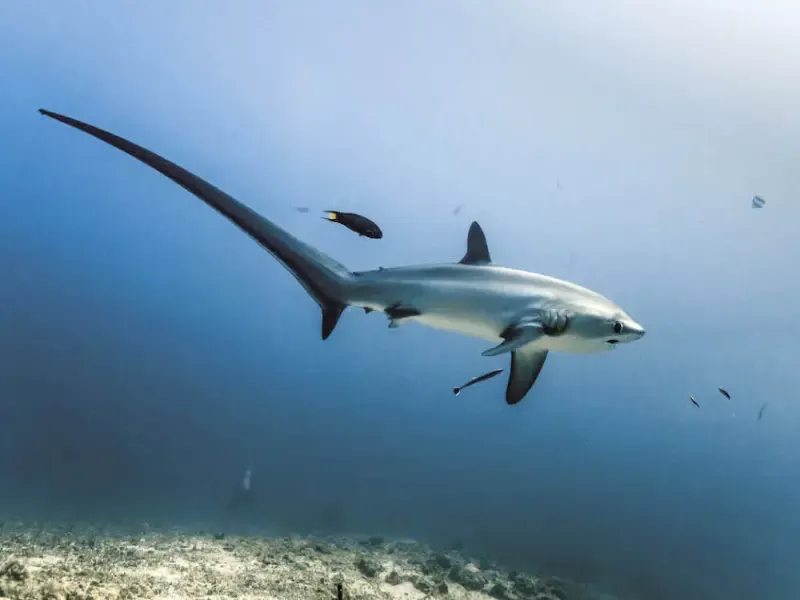
Armed with a tail nearly as long as their body, threshers stun prey with powerful whip-like strikes. These acrobatic hunters face intense fishing pressure for their meat, fins, and liver oil.
Sport fishermen also prize them as trophies. Their slow reproduction rate—giving birth to just 2-4 pups every year—makes them especially vulnerable.
6. Spinner Shark

Famous for their spectacular aerial displays, spinner sharks leap from the water and rotate multiple times before splashing down. Commercial fisheries harvest them mercilessly for their meat and fins.
Coastal development threatens their nursery areas, leaving young spinners with nowhere to safely grow before facing the open ocean’s dangers.
7. Mako Shark
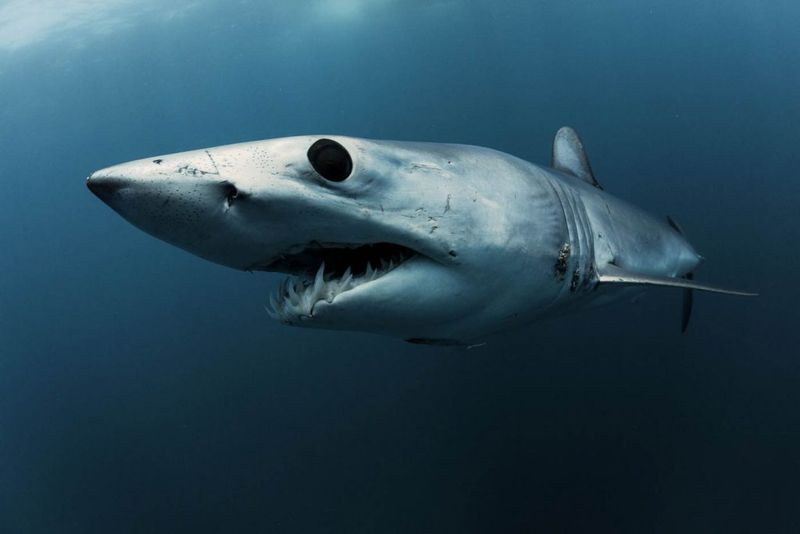
Built for speed, makos are the cheetahs of the ocean, capable of bursts up to 45 mph. Sport fishermen target these lightning-fast predators for their fighting spirit and acrobatic jumps.
Commercial longline fishing captures thousands annually. With females not reproducing until age 18 and bearing few young, mako populations cannot sustain current fishing levels.
8. Greenland Shark
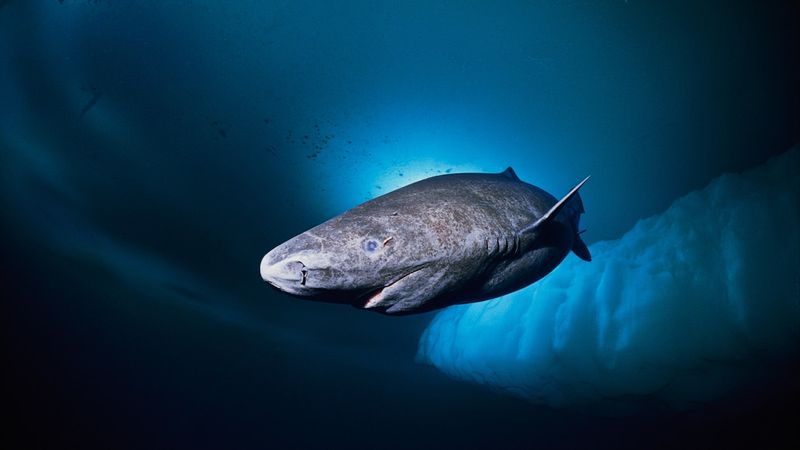
Masters of the deep and possibly the longest-lived vertebrates on Earth, Greenland sharks can survive for centuries in frigid Arctic waters. Some individuals swimming today were born before the American Revolution!
Climate change now threatens their cold-water habitat. Their extremely slow growth and late maturity make them particularly vulnerable to environmental shifts.
9. Zambezi Shark
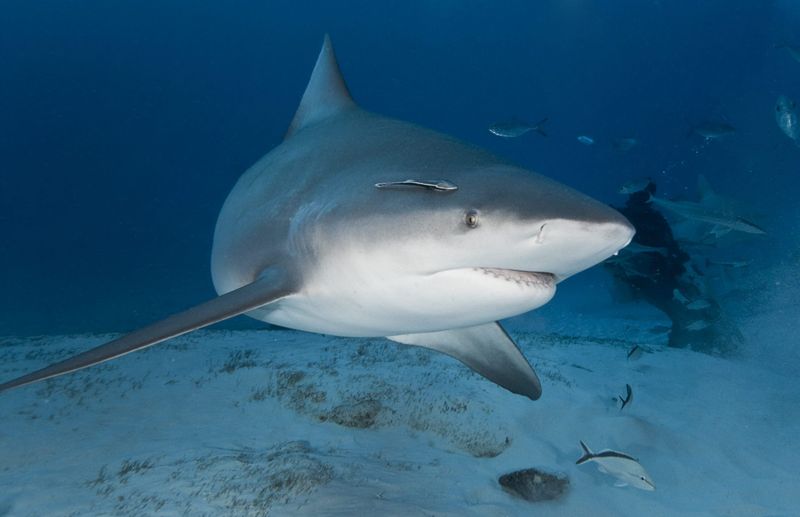
Unique among sharks, Zambezi (bull) sharks can tolerate freshwater, swimming up rivers and even inhabiting lakes. This remarkable ability puts them in frequent contact with humans, often with deadly consequences.
Coastal development destroys their nursery grounds. Pollution in rivers and estuaries further threatens these powerful predators that bridge marine and freshwater ecosystems.
10. Narrownose Smoothhound Shark

Mediterranean fishermen once considered these small sharks worthless bycatch. Today, they’re targeted specifically for their meat, marketed as “soupfin” or “sweet william” in European markets.
Trawl nets scour their seafloor habitats, capturing entire schools. With Mediterranean populations down by 90%, this species faces a real possibility of regional extinction.
11. Whale Shark
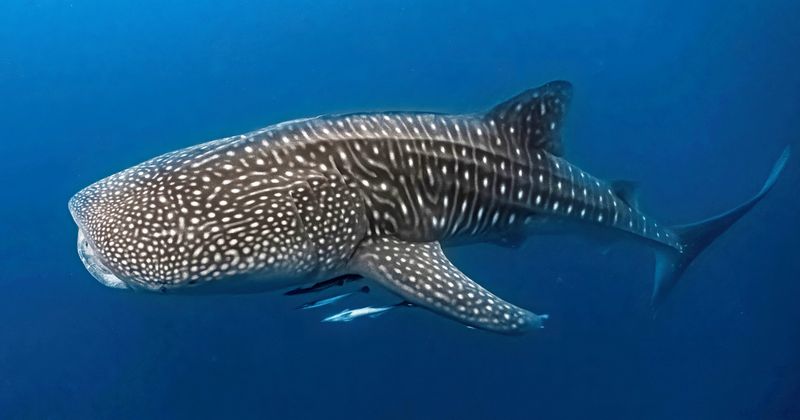
Adorned with a constellation of white spots, whale sharks are swimming paradoxes—the ocean’s largest fish yet completely harmless to humans. Reaching lengths of 40 feet, these gentle filter-feeders migrate vast distances.
Vessel strikes, entanglement in fishing gear, and targeted hunting threaten their existence. Females don’t reproduce until around 30 years old!
12. Angelshark
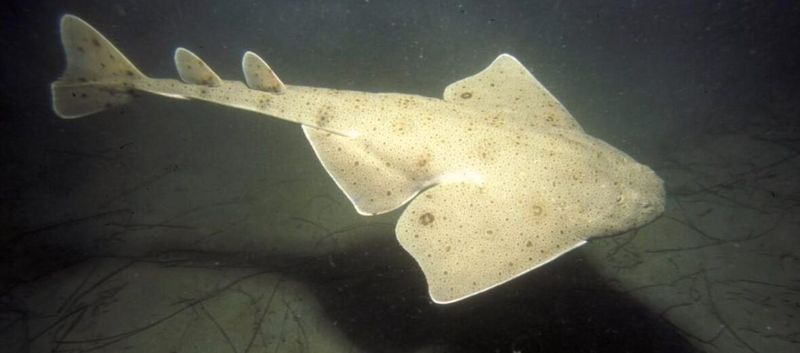
Masters of camouflage, angelsharks lie buried in sand, ambushing prey that swims too close. Their flat bodies resemble rays more than typical sharks, allowing them to hide in plain sight.
Bottom trawling fishing destroys their habitat and captures them indiscriminately. Once common throughout European waters, they’ve disappeared from much of their historic range.

